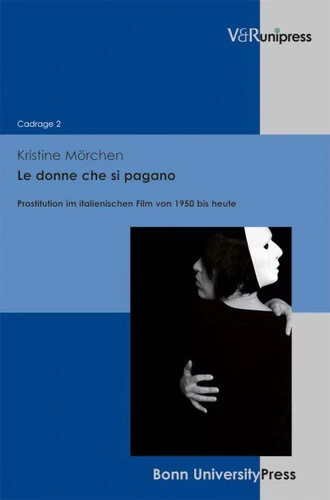Le donne che si pagano. Prostitution im italienischen Film von 1950 bis heute
Par : , , ,Formats :
Disponible dans votre compte client Decitre ou Furet du Nord dès validation de votre commande. Le format PDF est :
- Compatible avec une lecture sur My Vivlio (smartphone, tablette, ordinateur)
- Compatible avec une lecture sur liseuses Vivlio
- Pour les liseuses autres que Vivlio, vous devez utiliser le logiciel Adobe Digital Edition. Non compatible avec la lecture sur les liseuses Kindle, Remarkable et Sony
 , qui est-ce ?
, qui est-ce ?Notre partenaire de plateforme de lecture numérique où vous retrouverez l'ensemble de vos ebooks gratuitement
Pour en savoir plus sur nos ebooks, consultez notre aide en ligne ici
- Nombre de pages341
- FormatPDF
- ISBN978-3-86234-888-6
- EAN9783862348886
- Date de parution17/08/2011
- Protection num.pas de protection
- Taille3 Mo
- Infos supplémentairespdf
- ÉditeurV&R Unipress
Résumé
Prostitution is requested all over the world but the providers of sexual services still live at the margins of society. In films, however, there are a lot of prostitute protagonists, not only in the melodramatic context, but also in other film genres. That is also true for Italy, a country that is known for its traditional family values and for being close to Catholicism. But why are prostitutes omnipresent in films?By analyzing the prostitute protagonists of six Italian films from 1950 to today, the study tries to find an answer to this question.
Thereby the focus is set on two thematic fields: the prostitute as lover and the prostitute as mother. In order to specify the various aspects of prostitution in film, the chosen films are analyzed with six different approaches: the prostitute as voyeuristic object, the prostitute as threat and fantasy of men, the prostitute in a religious context, the prostitute's relation to space, the prostitute in the context of universal commodification and the prostitute as the personified Other.
The study confirms that prostitute characters in films are not only voyeuristic objects, but tell us a lot about those who try to live according to moral and social conventions.
Thereby the focus is set on two thematic fields: the prostitute as lover and the prostitute as mother. In order to specify the various aspects of prostitution in film, the chosen films are analyzed with six different approaches: the prostitute as voyeuristic object, the prostitute as threat and fantasy of men, the prostitute in a religious context, the prostitute's relation to space, the prostitute in the context of universal commodification and the prostitute as the personified Other.
The study confirms that prostitute characters in films are not only voyeuristic objects, but tell us a lot about those who try to live according to moral and social conventions.
Prostitution is requested all over the world but the providers of sexual services still live at the margins of society. In films, however, there are a lot of prostitute protagonists, not only in the melodramatic context, but also in other film genres. That is also true for Italy, a country that is known for its traditional family values and for being close to Catholicism. But why are prostitutes omnipresent in films?By analyzing the prostitute protagonists of six Italian films from 1950 to today, the study tries to find an answer to this question.
Thereby the focus is set on two thematic fields: the prostitute as lover and the prostitute as mother. In order to specify the various aspects of prostitution in film, the chosen films are analyzed with six different approaches: the prostitute as voyeuristic object, the prostitute as threat and fantasy of men, the prostitute in a religious context, the prostitute's relation to space, the prostitute in the context of universal commodification and the prostitute as the personified Other.
The study confirms that prostitute characters in films are not only voyeuristic objects, but tell us a lot about those who try to live according to moral and social conventions.
Thereby the focus is set on two thematic fields: the prostitute as lover and the prostitute as mother. In order to specify the various aspects of prostitution in film, the chosen films are analyzed with six different approaches: the prostitute as voyeuristic object, the prostitute as threat and fantasy of men, the prostitute in a religious context, the prostitute's relation to space, the prostitute in the context of universal commodification and the prostitute as the personified Other.
The study confirms that prostitute characters in films are not only voyeuristic objects, but tell us a lot about those who try to live according to moral and social conventions.



